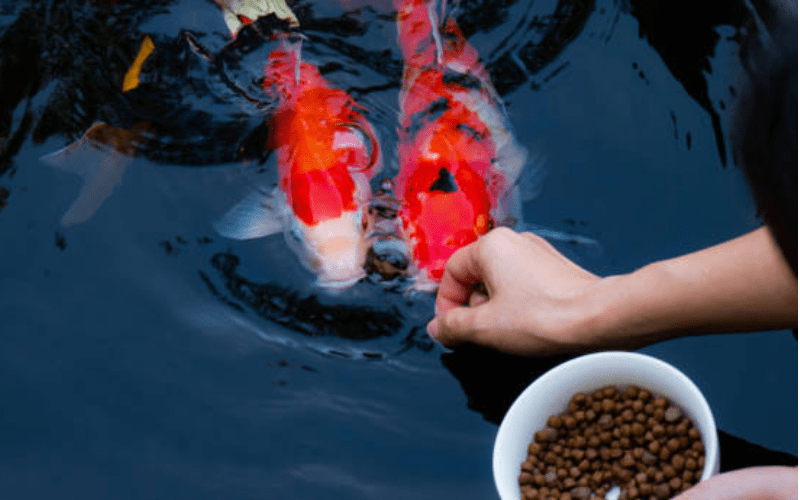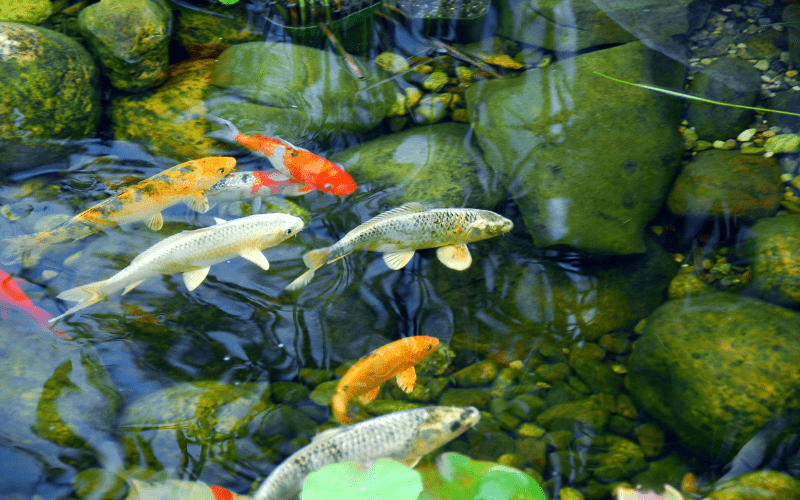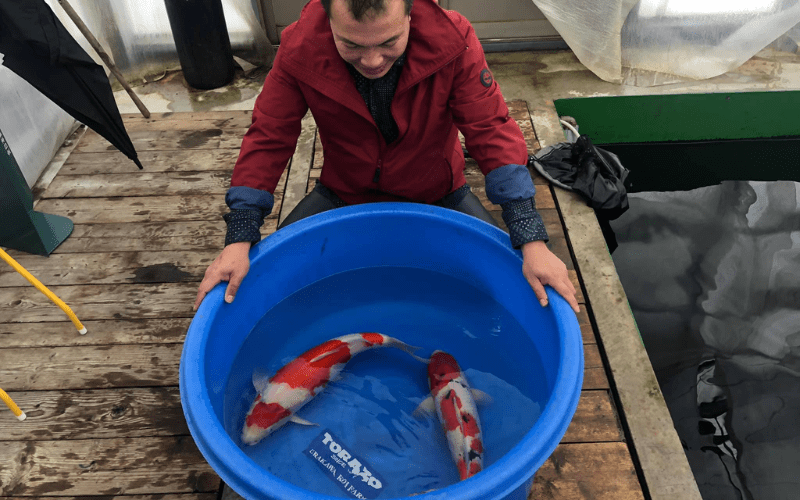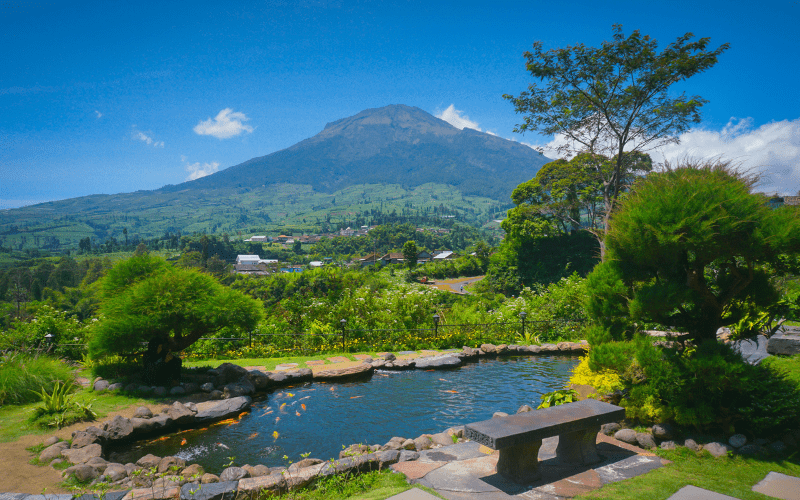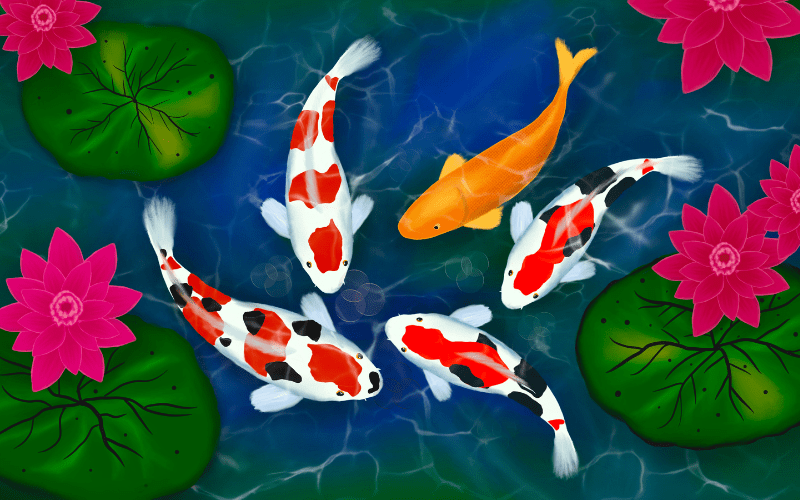Not sure what do koi fish eat? Koi fish are not only known for their vibrant colors and grace but also for their distinctive dietary needs. Ensuring a balanced diet plays a vital role in enhancing their colors, supporting growth, and promoting longevity. In this guide by Torii Koi And Pond, we’ll dive into everything you need to know about feeding koi fish, from their natural diet to seasonal feeding habits, so your koi can live a happy, healthy life.
Natural Diet of Koi Fish in the Wild
In the wild, koi fish follow a naturally varied diet, feeding on algae, insects, plant matter, and other organic particles found in ponds and rivers. This diet keeps them active, healthy and well-nourished. Koi fish are omnivores, so they instinctively seek out food sources rich in nutrients, including proteins, fats, and carbohydrates. However, for koi kept in ponds, replicating this natural diet can be challenging, which is why providing a diverse diet is essential to their health and well-being.
Commercial Koi Fish Food
For koi keepers, commercial koi food is a convenient and reliable option to meet dietary needs. High-quality commercial koi food generally comes in three forms: pellets, flakes, and sticks. Pellets are the most popular and come in floating or sinking options. Choose pellets with a balanced ratio of protein, fat, and fiber, as these support growth, energy, and vibrant colors.
Different food formulations are available for koi at different life stages. Torii Koi And Pond recommends using high-protein food during the warmer months to help koi grow and stay active. In colder months, switch to low-protein food, as koi become less active in cold water and digest proteins more slowly.
Live and Fresh Foods for Koi Fish
In addition to commercial food, koi benefit from live and fresh foods that add variety and support digestion. Offering earthworms, brine shrimp, bloodworms, and even daphnia once or twice a week adds excitement to their diet. This type of enrichment enhances koi’s natural behaviors and gives them nutrients from organic sources.
To ensure safe feeding, always buy live food from reputable suppliers. Live foods also add protein and micronutrients that contribute to koi’s health and make their colors more vibrant.
Homemade Koi Fish Treats and Supplements
Creating homemade treats for koi can be a fun and beneficial way to bond with them while diversifying their diet. Koi enjoy fresh fruits and vegetables like watermelon, peas, oranges, and lettuce. These snacks are rich in vitamins and provide hydration. You can float slices of these fruits on the water’s surface, allowing koi to nibble at their leisure.
Koi owners need to avoid feeding sugary fruits too often and only provide these snacks in small amounts. Torii Koi And Pond suggests removing any uneaten food after 20 minutes to maintain water quality in your pond.
How to Feed Koi Fish Properly
Feeding koi requires more than simply dropping food into the pond. Here’s a quick guide to ensure proper feeding:
- Timing: Feed koi in the morning and early evening when they are most active.
- Portion Size: Feed them only as much as they can consume in five minutes. If food remains after this, reduce the portion size next time.
- Feeding Frequency: Feed koi 1–2 times daily during warm months, reducing feeding frequency in fall and stopping altogether in winter as water temperatures drop.
Signs of overfeeding include cloudy water, lethargy, and uneaten food in the pond. Keeping to appropriate portion sizes prevents issues and keeps your koi’s pond environment healthy.
What Do Koi Fish Eat?
| Food Type | Examples | Benefits | Feeding Frequency |
|---|---|---|---|
| Commercial Koi Food | Pellets, flakes, sticks | Balanced nutrition, easy to store | Daily (1-2 times in warm months) |
| Live Foods | Earthworms, brine shrimp, bloodworms | Protein-rich enhances natural behaviors | 1-2 times per week |
| Fresh Vegetables | Lettuce, spinach, peas | Rich in vitamins, aids digestion | Weekly |
| Fruits | Watermelon, oranges | Source of natural sugars, hydration | Occasionally (in small amounts) |
| Seasonal Adjustments | Wheat germ food in autumn | Supports metabolism in colder temperatures | Adjust to water temperature changes |
| Avoid Feeding | Bread, sugary snacks, meat | Poor digestion, unhealthy for koi | Avoid |
Seasonal Feeding Considerations
Feeding koi differs significantly by season because koi have slower metabolisms in colder weather. Here’s a quick guide by Torii Koi And Pond:
- Spring: Begin feeding with high-protein food in small portions as water temperatures rise above 50°F (10°C).
- Summer: Increase the quantity of protein-rich food for growth and energy, as koi are most active in warm water.
- Autumn: Gradually reduce protein and switch to wheat germ or low-protein food to help koi digest food more easily.
- Winter: When water temperatures drop below 50°F, stop feeding koi, as they enter a state of semi-hibernation and stop eating.
Seasonal feeding adjustments keep koi comfortable and support a strong immune system year-round.
Common Mistakes in Feeding Koi Fish
Feeding koi properly is key to their long-term health. Here are common mistakes to avoid:
- Overfeeding: Overfeeding not only leads to waste buildup in the pond but can also make koi susceptible to health issues.
- Feeding Inappropriate Foods: Avoid feeding bread, sugary snacks, or any processed foods, as they can harm koi’s digestion and health.
- Ignoring Seasonal Changes: Maintaining the same diet throughout the year can stress koi, especially during cold weather, when they need a lighter diet or no food at all.
Key Points To Remember:
- Balanced Diet: A proper diet includes commercial koi food, live food, and fresh vegetables.
- Seasonal Adjustments: Modify feeding practices with temperature changes to support koi’s natural behaviors and needs.
- Variety: Adding fresh or live food treats provides enrichment and enhances their overall health.
- Avoid Overfeeding: Feed only what koi can eat in five minutes to prevent waste and health problems.
Following these tips will prevent health issues and maintain a clean, balanced pond environment. To know more about reading our FAQs for koi fish and ponds.
FAQs:
- What should I feed my koi in the winter?
Koi should not be fed during winter when water temperatures fall below 50°F (10°C). Their metabolism slows down, and they enter a hibernation-like state where they don’t need food. - Can koi fish eat goldfish food?
While koi can eat goldfish food in emergencies, it’s best to provide food specifically formulated for koi, as it meets their unique nutritional needs more accurately. - Is it safe to give koi fish fruit?
Yes, koi enjoy occasional fruits like watermelon and oranges. Remember to offer these in moderation and remove any leftovers to prevent water contamination. - How often should I feed my koi fish?
Feed koi 1–2 times daily during warm months. Reduce feeding frequency in the fall and stop entirely during the winter. - What do I do if my koi stop eating?
Check for signs of illness or poor water quality if koi stop eating in warm weather. It’s normal for them to stop eating as temperatures drop in cold weather.
Conclusion
Providing a nutritious, varied diet is essential to keeping your koi fish healthy and happy. Understanding what koi eat—from commercial food options to fresh treats and seasonal adjustments—allows you to cater to their unique dietary needs. With the right feeding habits and a little care, you can enjoy watching your koi thrive in a clean, balanced pond environment.
At Torii Koi And Pond, we understand the importance of koi health and offer a wide selection of high-quality food options for all seasons and koi sizes. Visit us for expert advice and the best products to support a vibrant koi pond.


